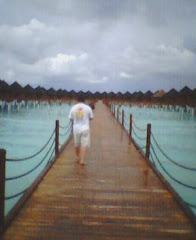六儀園の散歩のつづき。ガイドもありましたが、最初はなんの目的もなく、ただ歩いてるだけ。一休みをしたら、ガイドを読んで、それから真剣に見所をすべて探索しようと思いました。
Who wants to read when you have a view of the above?
上記の写真の景色を見れば、誰がガイドを読む?
It was after coming upon signs like these that I decided to take my walk a little more seriously. I had stumbled upon one of the "88 Views of Rikugien" - the first being the "Deshio-no-minato" which is where I was standing when taking some of the photos above. It is the name for the shore of the pond.
園内にこういうサインを見かけたあとから散歩をもっと真剣に歩くことにした。ここが「六儀園八十八境」 ⑬ 出汐湊 (でしおのみなと)。
Just beautiful!
なんて美しい!
Togetsukyo : The stone bridge was named after a famous Waka poem about the view of the moon moving across the sky with the cry of a crane in a rice paddy heard nearby.
渡月橋 : 「和歌のうら 芦辺の田鶴の鳴き声に 夜渡る月の 影そさひしき」の歌から名付けられた石の橋。2枚の大岩の重量感が、あたりの雰囲気を引き締めています。
The next point of interest I found myself at was the "Ashibe no chaya traces". Chaya translates to teahouse.
次発見したのは「芦辺の茶屋跡」。
I then crossed this bridge but came back to it later as I also discovered this was another point of interest. By the way, the explanations of the points of interest are either taken from the signs in the gardens or directly from the guide you are provided with at the entrance of the park.
この橋を渡ったあと、もう一回この場所に戻りました。ここも六儀園の見所の一つでした。 園内の見所の説明は入り口からもらったガイドから書きこんでるものです。
Next, I saw a sign pointing to the direction of the Fujishiro-toge. The tallest hill in the gardens is 35m high. The summit of this hill is called Fujimi-yama (Fuji-view peak). The views from the top of the hill are truly wonderful. The name for the hill is taken from a mountain pass of the same name in Kishu (present day Wakayama Prefecture).
歩き続いたら、次見つかったサインが藤代峠。もちろん行ってみるしかない。藤代峠:園内で一番高い築山、標高は35m。いただきは「富士見山」と呼ばれ、そこからは素晴らしい展望が開けています。紀州(現在和歌山県)にある同名の峠から名付けられました。
View from the summit of Fujishiro-toge / 藤代峠からの眺め
I came across a few of these stone pillars as well. According to the guide, these are "Sekichu". There were originally 88 stone markers that indicated views of the garden that were of special beauty or interest (The "88 Views of Rikugien"). At the present time, only 32 of the markers still exist.
また園内のあちこちにこういう石柱が建てられてます。 庭内の88ヶ所景勝地(六儀園八十八境)には、それぞれに石柱が建てられていましたが、現在では32ヶ所のみが残っています。
Yes, this path is another scenic viewpoint. It is the "Sasakani-no-michi". Ancient people referred to spiders as "sasakani". The path is very narrow and therefore likened to a strand of a spider's web.
見所また発見 ‐ 蛛道 (ささがにのみち)古くはクモを「蛛(ささがに)」と呼び、この小道がクモの糸のように細いことから名付けられた。
This is site No. 86 of the "88 Views of Rikugien" - "Zenkei-no-nagare".
六儀園八十八境 No.86 ‐ 「剡渓流(ぜんけいのながれ)」。
Back to the bridge I crossed earlier. This is called the "Yamakage-bashi" and is also one of "88 Views of Rikugien" - No.85.
先渡った橋に戻った。この橋も六儀園八十八境の一つです。「山影橋」。
And the walk continues...
散歩がまだまだつづく。。。




















.jpg)



1 comment:
The spider's path is my favourite part of Rikugien, especially when the maples have fresh green leaves. It's usually so quiet!
Post a Comment